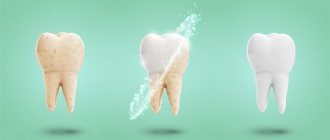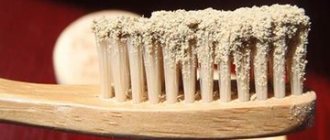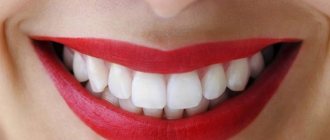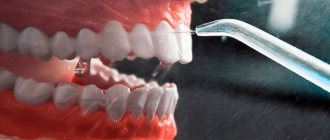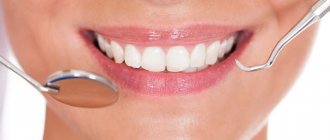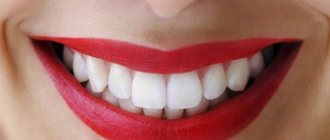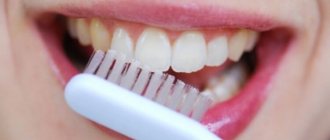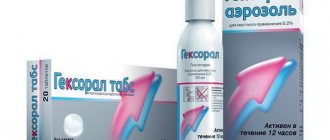At an appointment with a pediatric dentist, parents most often ask questions about how to prevent dental disease and what to do to maintain their health. We all know that caries occurs as a result of the activity of harmful microorganisms in the oral cavity. These microorganisms feed on pieces of food stuck in the teeth, wash out beneficial minerals from the tooth and lead to its destruction, sometimes tartar.
Remember that the health and beauty of permanent teeth directly depends on the health of baby teeth. You should not hope that if there is a problem with a baby tooth, it will fall out later and there is no need to treat it. Parents should prevent any diseases by taking preventive measures in time.
Of course, everyone wants their child to use the best, safest and most effective products. Let's talk about one of the very good ingredients for baby's dental care products - xylitol.
Where is xylitol used?
It tastes like regular sugar and does not have the unpleasant aftertaste that other artificial substitutes have. Xylitol, as a low-calorie substance with a low glycemic index (GI), was used in European countries back in the 19th century as a treatment for patients with diabetes.
In the modern world, manufacturers in many countries add xylitol to food and medicines. Sweets, chewing gum, candies, syrups, toothpastes, lollipops and chewable multivitamins are not complete without the addition of birch sugar.
Xylitol is a real salvation for those dieters who find it difficult to completely give up sweets. It is quite capable of replacing the usual sugar. Xylitol has a low calorie content and can be added to cold and hot drinks and snacks.
Filimonov Oleg Vladimirovich
Implant surgeon, orthopedist
I rather lean not towards substitutes, but towards sugar “cancellers”. We eat too many carbohydrates, so it makes sense to cut them down. But part of the remainder can be replaced.
Definitions
In addition to sugar, the sweet taste of food is influenced by two other groups of substances: sweeteners and sweeteners. The term “sugar” refers to all mono- and disaccharides contained in food products, but it is table sugar, that is, sucrose, that has the greatest influence on the processes of caries occurrence. Sweeteners such as saccharin, aspartame, acesulfame or cyclamate taste much sweeter. They are mainly added to drinks. Sweeteners are also often confused with sugar substitutes; the latter include, for example, the sugar alcohols sorbitol, mannitol and xylitol. The sugar alcohol xylitol is roughly comparable in sweetness to sucrose, while the taste of sorbitol and mannitol is half as strong. Sugar alcohols are mainly used in the manufacture of various sweets, tablets and chewing gum. While sweeteners are extremely calorie-dense, sweeteners are calorie-free; their calorie content is half that of sucrose. It should be noted that both sweeteners and sugar substitutes have little or only minimal effect on insulin and blood sugar levels, making these substances safe for diabetics.
Xylitol and dental health
It is birch sugar that can protect our teeth from the harmful effects of acids that cause the process of demineralization. Chalky spots, especially noticeable on the incisors of baby teeth, are the initial stage of caries, which is still reversible. It is important to notice it in time and stop it before more serious treatment is required.
Saliva, which has an alkaline pH, helps partly in this process. By washing your teeth, it neutralizes acid and saturates the enamel with beneficial fluoride and calcium. But the problem is that those with a sweet tooth typically have a carbohydrate diet, so saliva can lose its beneficial properties, acquiring the same acidic composition as table sugar. Thus, the bacteria receive an additional source of nutrition, starting the same demineralization process.
The peculiarity of xylitol for teeth is that it does not support the normal life processes of dangerous bacteria and thereby provokes their death. As a result, the acid-base balance is normalized and the adverse effects of acids on tooth enamel are reduced.
Chewing gum
Chewing gum has been used as a confectionery product for a long time. Chewing sugar-containing gum causes the pH level of plaque to drop sharply and can cause increased caries.
However, the invention of sugar-free chewing gum suggested a new direction for the development of caries prevention. Chewing sugar-free gum increases the pH level of plaque, stimulates bicarbonate-rich saliva, and significantly reduces acidity. However, chewing gum is not a sufficient remedy to completely remove plaque. However, its use does lead to a significant reduction in plaque on the surface of the teeth .
Since gum alone does not remove plaque from pockets, this method has no overall beneficial effect on gingivitis. When chewing regular chewing gum, the rate of salivation increases 10 times (on average from 0.4-0.5 ml/min to 5-6 ml/min), while when chewing gum with the addition of xylitol and sorbitol, the rate of salivation remains at at the same high level for another 20 minutes after consumption.
Benefits of xylitol for teeth and oral health:
- reduction in the development of carious processes;
- strengthening enamel;
- increased saliva production with increased protective properties;
- stabilization and neutralization of the initial stage of caries;
- control of infection of the oral cavity by the fungus Candida albicans.
It is noteworthy that the beneficial effects of xylitol persist long after treatment or preventive measures. And its indisputable advantage is that it is absolutely harmless when the permissible dosage is observed. If the consumption limit is exceeded, a laxative effect may be observed, as is the case with any sugar alcohols. This is the only harm of xylitol.
Filimonov Oleg Vladimirovich
Implant surgeon, orthopedist
Xylitol is neither beneficial nor harmful. It has no biological value and does not cause the proliferation of microorganisms. But due to its sweet taste, xylitol stimulates the production of saliva, which helps cleanse the mouth by better washing the teeth. Therefore, xylitol helps prevent caries. However, it should be understood that only a sugar substitute is not able to prevent caries, since its prevention is a set of measures, and not just chewing gum.
Xylitol - chemistry, manifestation, metabolism
Xylitol is a pentahydric sugar alcohol. Xylitol is an intermediate product of glucose metabolism and, therefore, is subject to natural production in both human and animal bodies. This substance is found in all tissues of the human body; Moreover, it reaches the highest concentration in the liver.
Many fruits, berries and vegetables are rich in xylitol. Today it is mainly produced from the polysaccharide xylan, which is found, for example, in birch wood. Industrial production of xylitol is expensive, so its use as a sweetener is relatively expensive.
When consumed exogenously, xylitol is absorbed in the intestinal tract through the process of free diffusion. Up to 80% of xylitol metabolism occurs in the liver. Xylitol is also absorbed approximately 5 times slower than glucose.
Due to its osmotic effect, significantly exceeding the daily dose of the sugar alcohol xylitol can lead to increased intestinal motility or cause diarrhea. However, thanks to adaptive mechanisms, the rate of absorption increases in just a few days. A single dose of 10 g of xylitol does not cause a negative effect in children, and adults can consume 50 to 70 g of xylitol per day without complications . After habituation and adaptation, the daily dose can be raised to 200 g.
The refreshing taste of xylitol is due to its high endothermic temperature of dissolution. Thus, when solid xylitol dissolves in the mouth, a cooling effect occurs.
What are the benefits of xylitol for children?
Xylitol is necessary for the prevention of caries in children even before their permanent teeth appear. The health of molars directly depends on the condition of baby teeth, so birch sugar is designed to reduce the negative impact of bacteria on children’s teeth. In products for children (toothpastes, rinses, lozenges), xylitol acts as follows:
- gives the products a familiar and pleasant sweet taste;
- slows down the growth of microorganisms;
- saturates teeth with calcium.
As part of confectionery products, xylitol helps to significantly reduce the harmful effects of sweets on a child’s teeth.
Other highlighted effects
Among other things, xylitol also stops the reproduction of Streptococcus mutans and has a general biostatic effect on them. Early studies suggested that regular use of xylitol-containing chewing gum significantly reduced Streptococcus mutans colonization. Therefore, xylitol can be characterized as a cariesstatic substance. Several recent studies have demonstrated that regular consumption of xylitol-containing confectionery products significantly reduces Streptococcus mutans in saliva and dental plaque.
How to buy or order xylitol?
Please note that xylitol in hygiene products and products may have another name: food grade xylitol, xylitol (Xylitol), XyloSweet, Polysweet, Xyla. Birch sugar can also be purchased in its “pure” state. It is sold in pharmacies and stores in powder, sometimes in cubes or dragees, in various mixtures, and its price is relatively low.
At home, xylitol can be added to hot coffee and tea, used in the preparation of various dishes instead of sugar, and used in canning. However, it is worth remembering that the substance does not support fermentation, therefore, it is ineffective for yeast dough, and it does not turn into caramel at any temperature.
Chewing gum with xylitol will come in handy if you can’t brush your teeth after eating. Chew it for no more than 10 minutes, until the pleasant taste remains, and no more than two pads or one plate at a time.
If you want to use birch sugar as a means of protection against caries, it is better to buy it as part of products specially designed for this purpose. In the Startsmile online store you will find various toothpastes with xylitol, rinses, chewing gum, lozenges and lozenges containing xylitol.
Saliva
Saliva is indispensable for maintaining the biotope of the oral cavity. Due to the correlation between salivary flow rate and salivary buffer systems, increased salivary production is associated with increased pH levels in saliva and biofilm. In addition, the degradable substrate is removed from the oral cavity faster (increased purification rate), produced acids are neutralized, and the mineral content of saliva ensures better remineralization. Also, with increased salivation, bacterial plaque that is not yet attached to the enamel surface is easier to remove from the oral cavity.
With regard to stimulation of salivation, the use of xylitol-containing chewing gum leads to more favorable changes in the composition of saliva, with the concentration of bicarbonate becoming the main buffering system of saliva. Finally, high salivation greatly helps to neutralize oral contaminants that are inevitable when eating acidic foods. Therefore, after consuming highly acidic foods, it is recommended to stimulate salivation to prevent erosive damage to the enamel surface.
Instructions for use
The substance is used for several purposes:
- Helps in the preparation of sweet pastries, candies, torits, reduces calorie content and glycemic index.
- To extend the shelf life of the product, increase its shelf life, it is added to various preparations for the winter.
- A sugar substitute is also used as a means to cleanse the liver of toxins and harmful substances.
- For another purpose, it is rarely used; it can be used as a sweetener, adding in small quantities to tea or coffee, with limited sugar consumption.
Although the substance is considered relatively harmless in medicine, you should not use it in high dosages yourself. This practice can cause disturbances in the functioning of the body and its systems.
https://youtu.be/b45RfYqebj0
Signs of excess in the body
The ability of xylitol to accumulate in tissues negatively affects the functioning of the body. With systematic, excessive consumption, the following problems arise:
- the functioning of the gastrointestinal tract is disrupted, due to which the degree of absorption of nutrients from food decreases, diarrhea develops;
- body weight increases due to stimulation of appetite, food is not perceived correctly, a person does not regulate its consumption, which leads to a set of extra pounds.
If there are signs of excess substance in the body, you should stop consuming it or significantly limit it.
Study of caries
Clinical studies presented in this section have shown that chewing gum sweetened with xylitol significantly reduces the risk of developing dental caries. At the same time, repeated use of this chewing gum is an obligatory component of the daily diet. The control group who did not consume it had a 30-60% higher risk of developing caries. The starting point for research on xylitol from a dental perspective was research at the University of Turku conducted more than 30 years ago.
Turku, Finland:
The first controlled study at the University of Turku looked at the effects of using sweeteners in food and chewing gum. At the same time, almost all the sugar contained in the food was replaced by xylitol or fructose.
Compared to the control group that ate regular sugar-containing foods, participants in the 100% Xylitol group showed a significant reduction in cariogenic processes: within 2 years they slowed down by 85%.
When additional parameters of this study were included, specifically looking at the nature of the biofilm, patients in the 100% Xylitol group showed a 50% reduction in plaque compared to the sucrose and fructose group.
Some time after this study, based on the complete replacement of sucrose, an additional experiment followed where sucrose was only partially replaced by xylitol over the course of a year. This experiment also showed that replacing sugar is an effective preventive measure. Compared to patients who consumed sugar-containing chewing gum, the second group experienced a significant (approx. 65%) reduction in caries processes.
After the University of Turku published research on the preventive potential of xylitol, the sweetener attracted widespread interest. Further clinical studies outlined the main goal - to study in more detail the effect of xylitol on the colonization of bacteria in the oral cavity, the ecology of plaque and the development of caries. Thus, the following conclusions were published:
Ylivieska, Finland:
In a study conducted in Finnish schools among 11-12 year old children, chewing gum was considered as an addition to an existing prevention program (fluoridation, fluoride varnish, oral hygiene advice).
In the control group, which consumed xylitol-containing chewing gum three times a day, a significant reduction in caries processes by 55-60% was achieved. As a result of prevention, the teeth that erupted in children during the trial period were the most resistant to caries.
Children at high risk for tooth decay also showed the greatest benefit from consuming xylitol-containing chewing gum. Against the backdrop of well-developed dental care in schools, the results of using xylitol chewing gum were truly impressive. Subsequent studies also showed that long-term effects were achieved when using this chewing gum in the fight against tooth decay. Even five years later, children who consumed xylitol had fewer caries lesions compared to children in the other control group. The long-term effect was especially noticeable in the teeth that erupted in children during the prophylactic period.
Belize, Central America:
This study primarily examined the direct differences between xylitol and sorbitol chewing gum. The duration of the experiment was limited to 40 months. It was carried out in conditions of extremely high sugar intake, high caries activity and limited dental care.
In children who consumed xylitol-containing chewing gum, caries appeared significantly less frequently after the end of the study than in the group with sorbitol-containing chewing gum. The results obtained support the view that xylitol is not only a non-cariogenic sugar substitute, but also promotes the remineralization of primary enamel lesions. This study also documented the long-term effects of consuming xylitol-containing chewing gum. Five years after the end of the experiment, children continued to experience fewer caries in their molars.
Estonia:
Unlike chewing gum, tablets or candies do not pose disposal problems. Also, chewing gum is not recommended, for example, when wearing fixed orthodontic appliances and other treatment options. The studies compared the preventive effect of xylitol-containing tablets and chewing gum. In schools, teachers gave children chewing gum or candy every day. Thus, children consumed xylitol-containing foods on approximately 200 days a year during school.
After a trial period of 2 to 3 years, it was found that taking xylitol tablets 3 times a day (daily dose - 5 g) has an effect similar to that of chewing gum. This study shows that it is not chewing xylitol-containing gum that has an effect on oral health, but xylitol itself.
Transmission of Streptococcus mutans from mother to child
Recently, there have been increasing reports of another promising effect of xylitol-containing chewing gum. Streptococcus mutans is the most cariogenic group of bacteria in the oral cavity.
In newborns, colonies of Streptococcus mutans are initially absent. Thus, colonization of the oral cavity mainly occurs through the transmission of bacteria from mother to child during the eruption of primary teeth. This period is also called the Streptococcus mutans infection window.
There is currently debate about the extent to which xylitol has an inhibitory effect on mother-to-child transmission of microorganisms. Based on the hypothesis that prevention of Streptococcus mutans infection is associated with the prevention of child caries, studies using chlorhexidine have revealed the benefits of its use as an alternative.
A recent study examined the effect of xylitol on mother-to-child transmission of bacteria. Mothers began regularly using xylitol-containing chewing gum starting three months after giving birth until their children reached two years of age. Two groups of mothers were given either chlorhexidine or treated with fluoride varnish, and the second group received xylitol. Children did not receive any special treatment or preventive measures in either the experimental or control groups. At the end of the trial, xylitol was found to be much better at preventing transmission and therefore colonization of Streptococcus mutans in the infant's mouth. Also, during control examinations after 3 and 6 years, it was recorded that under the influence of xylitol, microbial colonization and cariogenic processes in children are significantly lower.
The authors of the study justify the effective effects of xylitol mainly by the fact that when it is consumed, the content of Streptococcus mutans in the oral cavity is significantly reduced. This certainly interesting effect of xylitol was confirmed in further studies. Consequently, there is a prospect of changing the paradigm of caries prevention by creating less cariogenic conditions in the child’s oral cavity.
Daily norm
The need depends on many factors, in particular on the body’s sensitivity to the substance and the person’s state of health.
Table 1. How xylitol is used.
| In a concentration of 40-50 grams, in combination with warm drink, tea or water: | Used as a laxative. |
| In a concentration not exceeding 20 grams: | To cleanse the liver and stimulate the flow of bile. |
| 15-20 grams for breakfast and lunch: | As an anthropogenic drug. |
Much depends on the characteristics of the body and sensitivity. The dosage can be increased or decreased. Xylitol is not considered essential, but it is better to experiment with the dose under the supervision of a physician.
Xylitol for liver cleansing
In medicine, it is also used to cleanse the liver, stimulates the outflow of bile, and removes toxins from the body.
What happens to the organ:
- when carrying out cleansing procedures, the secretion of enzymes improves;
- the bile ducts dilate, which facilitates the removal of toxins from the body;
- cleansing helps optimize the functioning of the urinary system.
Procedures of this nature are carried out on a regular basis, preferably once a week. If necessary, more often.
How do toothpastes work to restore enamel?
Anyone who cares about dental health has probably asked the question more than once: “how can you strengthen tooth enamel?”
If your teeth have become sensitive or stains have appeared on your teeth, this is certainly a reason to consult a doctor, sort out the problems and choose treatment; home care may not be enough; serious in-office remedies may be needed.
However, as a preventative measure, strengthening the enamel is possible with the help of properly selected toothpastes. To understand, we will first delve a little deeper into chemistry.
Let's understand the processes in tooth enamel, pay attention to the composition of toothpastes, and by combining this knowledge, you will be able to choose your own toothpaste to restore teeth, but do not forget to consult with your doctor.
So, tooth enamel is the hardest tissue, which consists of 96% of inorganic mineral compounds - phosphorus, fluorine, calcium and other components. But despite her hardness, she is quite vulnerable. To find out why, let's delve a little deeper into chemistry.
The main compound of enamel is hydroxyapatite, and few people know that in the surface layer of enamel, hydroxyapatite crystals undergo constant changes. When the pH of saliva becomes acidic (in other words, teeth are not brushed), the hydroxyl group from our hydroxyapatite turns into water!
The crystal lattice is broken, calcium is released, and the vulnerability of the enamel to acids has increased. This is the process of demineralization of enamel at the molecular level. If there is an excess of calcium or phosphorus ions in the periodontal environment, then the reverse process will begin - mineralization.
What about fluoride? And fluorine ions form a modification - hydroxyfluorapatite is a fairly acid-resistant compound, and in high concentrations calcium fluoride is a generally insoluble compound.
In conditions of healthy oral microflora and normal saliva composition, the natural processes of demineralization and remineralization occur constantly and ensure a balanced mineral balance of tooth enamel.
The source of calcium and phosphate ions is saliva, and poor hygiene and poor nutrition contribute to the proliferation of bacteria, which in turn contribute to the accumulation of acids in the oral cavity.
So daily brushing of teeth is not just a hygienic procedure, it is a war for the strength and durability of the enamel of your teeth.
Indications for strengthening enamel
- The main indications for strengthening tooth enamel are:
- Caries at any stage.
- Baby teeth.
- Pregnancy and breastfeeding period.
- Discomfort or toothache while eating.
- Time before and after teeth whitening procedure.
- Orthodontic treatment (braces).
- Chips, scratches and cracks on teeth.
- Bite abnormalities and, as a result, pathological abrasion.
- Long-term drug therapy.
How do toothpastes work to restore enamel?
Most researchers agree that the main source of substances entering the enamel is oral fluid. There is also a very important detail: enamel has high permeability, due to the presence of microspaces filled with water through which various substances can penetrate, depending on their radius and activity. For example, the fluoride ion is large and active, therefore it is embedded quickly and only into the surface layers of the enamel, while the calcium ion is the opposite, so it manages to penetrate much deeper.
All this was proven through long-term research and based on these details, remineralization schemes were created - artificial saturation of tooth enamel with minerals.
Since ions penetrate the enamel through a slow diffusion process, remineralization requires time and therefore multiple manipulations.
Most of all, tooth enamel needs an element such as calcium. The strength and hardness of teeth depends on it. Calcium-containing pastes are suitable for restoring the enamel layer with minor damage. They contain various calcium compounds that penetrate dental tissue, strengthen and restore them.
Toothpastes with calcium are especially useful for primary signs of demineralization. Damaged enamel, which may periodically show itself with increased sensitivity, needs to be healed with pastes containing active calcium;
In case of serious damage to the enamel layer, it is recommended to use fluoride-containing pastes. Pastes containing fluoride, when cleaning the oral cavity, actively react with calcium ions, filling microcracks and damage to the enamel.
Penetrating into the enamel layer, the substances are integrated into the structure of the tissue, restoring and strengthening it.
It is useful to alternate fluoride-containing paste and calcium paste. It is undesirable for both components to be present in one tube, since together they form an insoluble salt. Because of this, when brushing your teeth, active fluoride and calcium ions will not be released from the paste, so there will be no benefit from such therapeutic cleaning. Modern research does not stand still, constantly modifying and improving the compositions of toothpastes. But there are still “old” toothpastes on the market that do not provide any benefit to teeth. I recommend carefully studying the composition of toothpastes and consulting with your dentist; some of them are reliable and proven
Toothpastes for restoring enamel with calcium
We have already seen that calcium ion has very weak activity. Therefore, it is very important that its form in toothpaste is easily absorbed by tooth enamel.
Calcium in toothpastes can be contained in the form of the following compounds:
- Calcium citrate.
- Calcium pantothenate.
- Calcium lactate.
- Hydroxyapatite.
Very often you can find a combination of two or three of these calcium compounds in toothpaste, which, of course, increases the chances of calcium being incorporated into the tooth enamel, and therefore strengthening the teeth.
Calcium citrate replenishes calcium deficiency in the body and is safe to swallow. The calcium in this compound easily penetrates tooth enamel, strengthening and protecting it.
Calcium pantothenate is a widespread calcium compound present in the body and actively involved in metabolism. It enriches teeth with essential calcium and is safe when ingested.
Calcium lactate is used in the food industry to fortify foods with calcium and as a substitute for table salt. It is perfectly absorbed by the body and protects against caries.
“Good old” calcium glycerophosphate. It has been established that toothpastes based on calcium glycerophosphate effectively remove plaque, stabilize the cariogenic situation in the oral cavity and do not have a sensitizing effect on the body. Pastes containing calcium glycerophosphate are time-tested, affordable and reliable. For all conservatives for complex therapy of superficial caries.
For those who love innovation.
Nanotechnology has reached toothpastes. Hydroxyapatite itself is by no means an innovation in dentistry. Experiments on its use took place at the beginning of the 20th century, but only at the end did Japanese scientists manage to develop nanocrystalline medical hydroxyapatite. This artificially synthesized form is maximally biocompatible and bioactive.
Over time, the formula has been improved, the particles have decreased, and today toothpastes containing nanohydroxyapatite are leading in the prevention of caries. Its effectiveness has been proven in the initial stages of caries, due to the ability of ions to penetrate into the microscopic spaces between enamel prisms, embedding themselves in the crystal lattice of hydroxyapatite crystals of tooth enamel. As a result, tooth enamel is restored.
Toothpastes with nanohydroxyapatite eliminate caries at the white spot stage and “seal” microcracks; reduce tooth sensitivity.
An indispensable assistant at the first signs of problems with tooth enamel.
Another contender for special treatment
Amorphous calcium phosphate. When in contact with saliva and hydroxyapatite, this element forms a special biofilm on the surface of the teeth, which: protects the enamel from the harmful effects of acids and ensures the connection of bioavailable calcium with the enamel, accelerating its remineralization.
Important! Since the active substance is obtained from cow's milk casein, this method of strengthening enamel is not suitable for people with allergies to milk protein.
Theobromine is for lovers of natural and maximally safe, expensive and chic. Theobromine (cocoa bean extract) acts as a catalyst; it stimulates the formation of its own hydroxyapatite crystals, providing natural remineralization of enamel. Calcium acetate serves as a building material for the crystal lattice of tooth enamel.
The enamel becomes denser and more resistant to acids. Studies have confirmed the beneficial effects of theobromine on tooth enamel and its high effectiveness in combating tooth sensitivity.
Please note that forms of calcium not listed above are merely abrasives in toothpaste (for example, calcium carbonate or dicalcium phosphate). Therefore, when choosing a toothpaste to strengthen your teeth enamel, be guided by the calcium compounds described above, or consult your dentist.
Toothpastes for strengthening enamel with fluoride
Every person knows: fluorides protect teeth from caries! But there is other known information - fluoride is toxic to the body. How to be? Who to believe? Let's figure it out.
In our body, elements such as fluorine and calcium are divided into macroelements, there should be a lot of them, and microelements, they are needed, but in small quantities. For example, the daily calcium intake for an adult is 1000-1200 mg. While the norm for fluoride is only 4 mg. But, did you know that with an excess of calcium and vitamin D in the body, the risk of urolithiasis increases. And excess iron in the blood also causes toxic effects and is called iron overload syndrome. And so the list can be endless.
Important! Everything useful is useful in moderation! Same with fluorine.
How to understand whether it is needed and whether it will not be harmful?
First of all, determine what fluoride content is in the water in the region where you live. Since we get the most fluoride from drinking water. You can find up-to-date information about fluoride levels in water in your area on the website of your local water utility.
In Russia, the fluorine content in water from natural sources is usually low - less than 0.5 mg/l. Only in the groundwater of the Tver, Moscow, Ryazan, Sverdlovsk and Chelyabinsk regions the concentration of fluorine is increased (reaches 4.4 mg/l). There is also a list of regions where, due to large production, the fluoride content is also increased.
Only in regions with high levels of fluoride in water are toothpastes with fluoride contraindicated. Everyone else needs and benefits from fluoride in the right dosages.
What are the benefits of fluoride?
Fluoride performs important tasks in the body.
- Together with phosphorus and calcium, it participates in the formation and strengthening of bone tissue and tooth enamel.
- Promotes healthy nail and hair growth.
- Stimulates hematopoietic processes: formation, development and maturation of red blood cells, platelets and leukocytes.
- Strengthens the immune system and maintains it at an appropriate level.
- Removes salts of radionuclides and heavy metals from the body.
- When used in oral care products, fluoride helps prevent dental problems and solve existing ones.
- Prevent tooth decay. Fluoride penetrates the enamel structure, prevents caries and treats it at the white spot stage.
- Protect against demineralization. The combination of fluorine with hydroxyapatite forms fluorohydroxyapatite, a substance that reduces it. This is how enamel remineralization occurs.
- Protect against lactic acid. Fluoride prevents bacteria from producing lactic acid. This reduces the growth of pathogenic microflora and gives the enamel additional protection.
Why is fluoride deficiency dangerous in the body?
Fluorine deficiency in the body is most often caused by its low content in drinking water (less than 0.7 mg/l). Another possible cause is improper regulation of fluoride metabolism in the body. A deficiency of this substance weakens tooth enamel, making it more vulnerable to caries. A child with a lack of fluoride may experience delayed ossification and defects in bone mineralization. In an adult, with prolonged deficiency, the risk of developing osteoporosis increases.
If there is too much fluoride in the body
Fluoride is found not only in oral care products and tap water, but also in food. The maximum permissible daily intake for an adult is 10 mg. An excess of fluoride is more dangerous for the body than a deficiency, as it entails irreversible processes. First of all, teeth and bones are affected; metabolic disorders, deterioration of blood clotting, etc. may occur. In children, even before teething, endemic fluorosis develops - this is a chronic lesion of tooth enamel in the form of spots of various sizes, shapes and colors. After 10–20 years of excess fluoride in the body, bone fluorosis develops, which can develop into osteosclerosis, osteoporosis and osteosarcoma (malignant formation). As a rule, we are talking about excess fluoride entering the body for a long time with water and food or, for example, toxic production. It is also possible that fluoride metabolism in the body is impaired, which is rare.
Is fluoride from toothpaste harmful?
We figured out that the toxic effect of fluoride, which some fear, is due only to ingestion. Should you be afraid of fluoride toothpaste? No! When brushing our teeth, we do not swallow toothpaste. And fluorine, as we remember, an element with high activity, quickly reacts with hydroxyapatite of tooth enamel, settling in its surface layers and does not have time to penetrate through the tooth into the bloodstream. This means that when brushing your teeth 2 times a day, toothpaste with fluoride does not cause any harm. And the concentrations of fluoride in toothpastes are strictly limited. The amount of fluoride in ppm is usually indicated on the packaging. The abbreviation ppm stands for parts per million and reflects the number of fluorine particles per million. If the tube states that the toothpaste contains 900 ppm of fluoride, this means that 1 kg(!) of toothpaste will contain 900 mg of this element.
The higher the fluoride concentration, the better the paste restores enamel. For prophylactic pastes it is 900-1150 ppm, for therapeutic and prophylactic pastes it is 1350–1500 ppm. There are products with higher content, but they are used only as prescribed by a doctor and in short courses. As a reminder, these recommendations are suitable for anyone living in areas with moderate levels of fluoride in their drinking water.
Can children have fluoride toothpaste?
The European Academy of Pediatric Dentistry (EAPD) recommends fluoride pastes and gels for everyone - even children and pregnant women - to prevent early stages of tooth decay.
Recommended fluoride content in toothpaste:
- up to 4 years - 200 ppm;
- from 4 to 8 years - 500 ppm;
- over 8 years old and for adults - 1450 ppm.
Fluoride is an important component in caring for children's teeth. However, if the toothpaste is swallowed frequently, fluoride accumulates in the body and can cause unpleasant consequences. Important! The child brushes his teeth under the supervision of an adult!
Children can begin brushing their teeth with fluoride-containing toothpastes when their first tooth erupts. Because the recommended amount of toothpaste when brushing your teeth is a grain of rice. And the amount of fluorine is 200-250ppm. That is, it is 200 mg in 1000 mg paste. Tube with children's toothpaste 50ml. Even if we roughly translate, without taking into account the density of the substance, that ml is equal to mg, then we get 10 mg of fluorine. It turns out that for the toxic effect of fluoride to manifest itself, the child must eat the entire tube of toothpaste at one time! Agree, if a child eats a whole tube of cream or anything else, this will also cause problems. Therefore, it is recommended to keep any attractive tubes away from children. And the child brushes his teeth under adult supervision.
How do fluorides affect enamel?
Fluoride ions interact with calcium ions, forming calcium fluoride, which is built into the structure of tooth enamel, restoring and strengthening it. Therefore, in order to fix calcium in the teeth and slow down the carious process, it is recommended to use fluoride-containing products to restore teeth. After all, as we discussed at the beginning of the article, hydroxyfluorapatite is a more acid-resistant compound, and calcium fluoride is insoluble, which means that enamel with such structural elements is stronger and less susceptible to caries. In addition, fluorine has a bacteriostatic effect, which helps to heal the microflora. This is why fluoride toothpastes are so popular among dentists.
However, all fluorine-containing additives have their own characteristics and differ in the speed of action. For example, amino fluoride, which is an organic fluorine compound, forms a persistent protective film on the surface of the enamel. Inorganic fluorine compounds (sodium fluoride and others) also form a protective film, but under the influence of saliva it dissolves faster.
As in the story with calcium, we pay attention to the composition.
Sodium monofluorophosphate. Today it is rare, in old-style toothpastes. It excludes all fluoride compounds. It does not contain fluorine ion, but a solid compound that does not dissolve as easily as ionic compounds. This compound was the result of creative work by chemists as a solution to the problem of combining calcium and fluorine.
What happens to this compound in the oral cavity remains unclear even to the scientists themselves who studied this topic. Some claimed that the element immediately binds to tooth enamel, others said that upon contact with enzymes in saliva, fluoride ion is released. But the secret remained not fully revealed!
Sodium fluoride is the most common supplier of fluoride. It is the simplest fluoride compound: fluorine ion and sodium ion, which are tightly bound to each other due to their charge. Thus, sodium fluoride is a salt that dissolves very easily in water, as well as in saliva (although not as well as regular table salt). Sodium fluoride supplies tooth enamel with fluoride ions, and thereby overcomes the first step in the prevention of caries.
Aluminum fluorides
Also a salt, as in the case of sodium fluoride, but has limited solubility in water, similar to calcium fluoride. Thus, since fluoride ions have a cariesstatic effect, the prospects for protection when using aluminum fluoride compounds are very limited.
For this reason, preference for choosing a product based on it remains minimal.
Zinc fluorides - today only in combination with other fluoride compounds.
Zinc fluoride is also a salt, easily soluble in water. In principle, a good candidate for joining the ranks of toothpaste formulations. Indeed, the first toothpaste with fluoride was based on zinc fluoride, a well-known American brand. But highly reactive zinc ions tend to cause problems! Therefore, the creators are forced to resort to some secrets to stabilize it. This has caused most manufacturers to switch to the more stable sodium fluoride.
In recent years, zinc fluorides have been experiencing a renaissance! Since in combination with amino fluorides they form a stable and effective chain.
Aminofluorides are the product of targeted development and long research!
Amino fluorides are also salts, but compared to sodium fluorides they have a more complex structure. They were the result of a focused search for the best compound to protect teeth from caries. The fluorine ion in the case of amino fluorides is bound into a complex amine molecule by fatty acid hydrolase. The peculiarity of these compounds is their bipolarity: on the one hand, the polar amine base is soluble in water, on the other hand, the nonpolar base is fatty. Such compounds become active on the surface, enveloping it.
| Component | Name on the tube | A comment |
| Sodium monofluorophosphate | Sodium monofluorophosphate | It is ineffective because due to the rate of decay it begins to act only after 3–4 minutes of cleaning. |
| Sodium fluoride | Sodium fluoride | Has a powerful antibacterial and restorative effect. The active substance reduces the ability of bacteria to convert sugar into acid, which destroys enamel. |
| Aminofluoride | Aminofluoride/Olaflur | Recognized as the most effective for caries prevention. Forms a protective film on the surface of the teeth, from which fluoride enters the enamel and strengthens it. |
| Tin fluoride | Stannous fluoride | It is proven effective, but has a side effect: it first lightens the restored areas of enamel, and then leads to their noticeable darkening. |
For home care and caries prevention, you can use toothpastes with fluoride; the most effective are those containing sodium fluoride and amino fluorides. The higher the fluoride content, the better the remineralizing properties of the paste and the protection against caries. But it is better not to use high dosages without a doctor’s prescription.
Fluoride and calcium are equally important for enamel remineralization. However, we remember that when combined they form an insoluble salt and neutralize each other’s effects. Now some manufacturers are trying to get around this problem. In the meantime, follow the proven scheme: alternate the use of pastes with calcium and fluoride.
Which toothpaste is best for strengthening enamel?
Of course, the one that suits you. When making a choice, you should not listen to commercials or the advice of friends.
The state of dental health varies from person to person. Advice from a dentist after a routine examination of the oral cavity will certainly help you decide on the right choice of toothpaste with active ingredients for the restoration and prevention of tooth enamel.
Proper nutrition, regular oral hygiene procedures and the use of only high-quality and highly effective toothpastes will help strengthen the enamel and maintain the health of your teeth.
